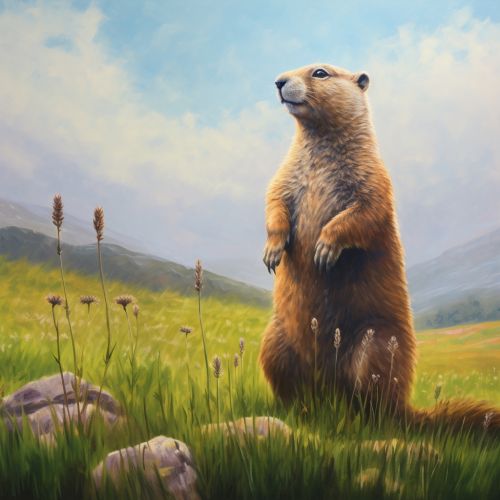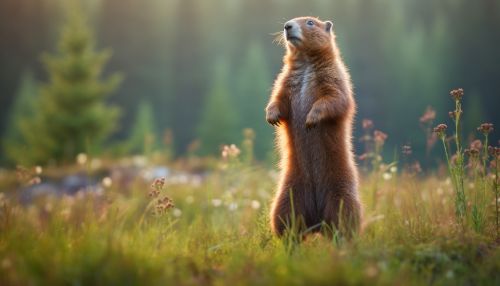Groundhog
Introduction
The Groundhog (Marmota monax), also known as the woodchuck, is a rodent of the family Sciuridae, belonging to the group of large ground squirrels known as marmots. It is widely distributed in North America and common in the northeastern and central United States as well as Canada. Groundhogs are well adapted for digging, with short, powerful limbs and curved, thick claws.


Biology and Behavior
Groundhogs are one of the few species that enter into true hibernation, and often build a separate "winter burrow" for this purpose. This is usually in a wooded or brushy area and is dug below the frost line and remains at a steady temperature well above freezing during the winter months. In most areas, groundhogs hibernate from October to March or April, but in more temperate areas, they may hibernate as little as three months.
Diet
The diet of a groundhog is primarily herbivorous, consisting of a variety of wild grasses, berries, and agricultural crops. Groundhogs also eat grubs, grasshoppers, insects, snails and other small animals, but are not as omnivorous as many other Sciuridae.
Reproduction
Groundhogs are among the few mammals that enter into true hibernation. Mating season occurs in the early spring after hibernation has ended. After a gestation period of approximately 32 days, the young are born blind and hairless. They are weaned and ready to seek their own dens at five to six weeks of age.
Interaction with Humans
Groundhogs are often considered a nuisance due to their habit of burrowing in human-altered landscapes, causing damage to both structures and crops. However, their burrowing habits can also have positive effects, such as aiding in soil aeration. Groundhogs are also hunted for sport, fur, and meat.
